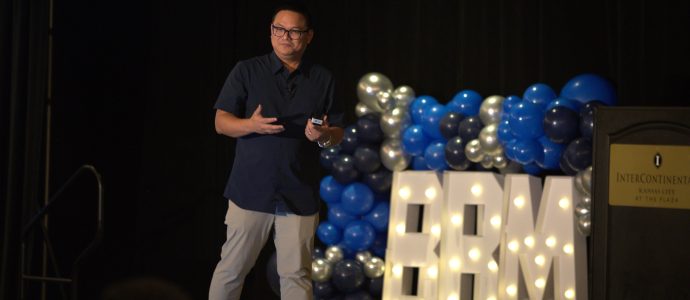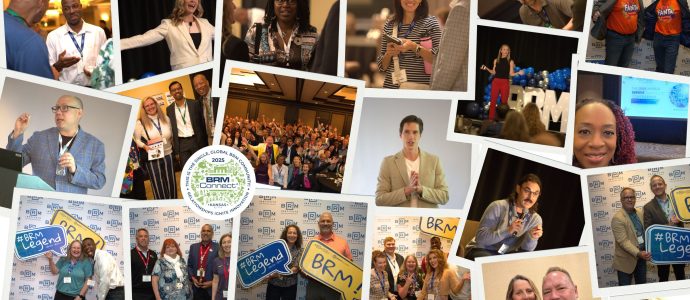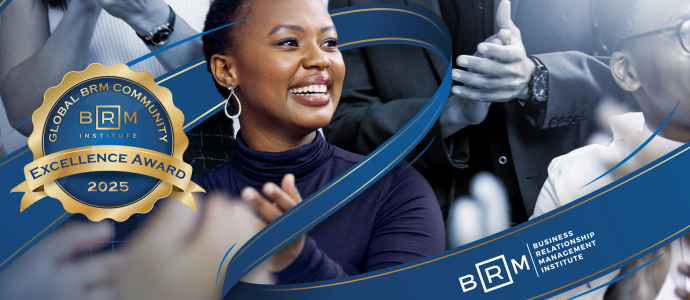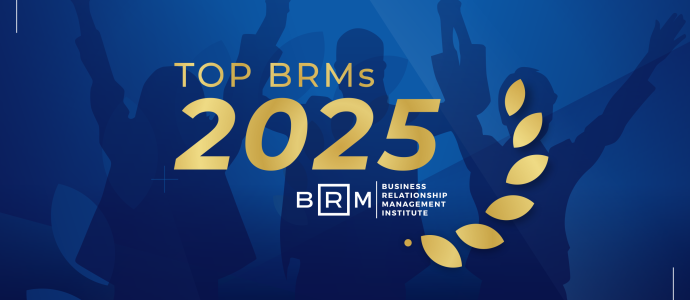BRM Community
Click here for:
BRM Communities
AI Will Take Your Job. It’s Relationship Skills that Will Make You Untouchable.
AI might take over many jobs, but it can’t take over relationships. The future isn’t AI powered — it’s people amplified. And as a BRM, you’re at the nexus of that future. Your emotional intelligence, your capacity to influence, your ability to build partnerships — that’s your fortress. That’s what makes you untouchable.
The 2025 BRM Compensation Report is Now Available!
The 2025 BRM Compensation Report delivers the most trusted, data-driven insights into Business Relationship Management roles around the world. Built from comprehensive global survey data, the report explores compensation, benefits, certification impact, and career progression across industries and regions. Designed for BRMs, executives, and HR professionals, it provides a clear picture of current trends shaping the profession and serves as a vital resource for benchmarking, workforce planning, and career development. Whether you’re advancing your BRM career or building organizational capability, this report offers the objective, real-world data you need to make informed decisions.
The BRM Advantage in the Age of AI: Why Relationships Are the Real Intelligence
Over the past two years, AI has dominated headlines, meetings, and strategies. But Kooner cautioned that while organizations race to adopt new tools and models, they risk overlooking something more fundamental—relationships. “If this webinar didn’t have AI in the title,” Kooner joked, “we might not even have the turnout we have today. But I want to talk about what really keeps us together—relationships.” Kooner urged attendees to see relationships as a strategic asset rather than a soft skill. As automation and digital tools evolve, human connection, empathy, and trust are becoming the differentiators that technology cannot replicate. “AI can process information at scale,” she said, “but humans process emotion at depth.”
From Super-Size to Right-Size: Lessons for the BRM
In a world where Big Gulps and “Super-Size Me” are cultural staples, it’s easy to assume bigger is always better. Scale matters—or at least, that’s what we’re told. But for Business Relationship Managers (BRMs), the conversation around scope and impact takes on a very different meaning. For BRMs, impact without alignment is meaningless. In our work, scope might refer to the scale of a project, the operational effect of a new system, the breadth of a strategy, or even the depth of a relationship with a business partner. The real challenge isn’t spotting magnitude—it’s making sure everyone defines it the same way.
The Power of Role Clarity: Why it Matters More than Ever
In many organizations today, blurred roles between Business Relationship Managers (BRMs) or Technology Business Partners and Product Owners (POs) create confusion, friction, and lost opportunity. Both roles exist to create value—but without clear boundaries and intentional design, even the best efforts can collide instead of connect. A recent McKinsey study showed that while 92% of companies are increasing their AI investments, only 1% believe their digital transformations are mature. This gap isn’t just about technology—it’s about clarity. When it’s unclear who ensures alignment and who drives delivery, value gets lost between strategy and execution.
Leading Through Connection: Why the Future Belongs to Advanced Relationship Leaders
As artificial intelligence accelerates change and organizations transform at unprecedented speed, the true differentiator for leaders will no longer be how fast they move—but how deeply they connect. In his keynote, “The Path to Becoming an Advanced Relationship Leader,” Glenn Remoreras makes a compelling case that in a world reshaped by automation, remote work, and hybrid collaboration, the greatest advantage we have left is profoundly human: the ability to build trust and lead through authentic relationships.
Imagine your name with BRMP after it. Feels good, right?
Imagine your name with BRMP after it. Feels good, right? Not just because it looks impressive on LinkedIn, but because it’s proof. Proof that you know how to influence, guide strategy, and get things done. Now, imagine using your year-end training budget to make that happen. Yes, right now, as the clock winds down on 2025, your organization probably has funds set aside for professional development.
From Notes to Strategy: How Tools Transform Collaboration & Impact
Of course, tools alone don’t solve the hardest challenge: alignment. Even when insights are captured and visible, leaders and staff often measure success with completely different yardsticks. In the next article, From Super-Size to Right-Size: Lessons for the BRM, we’ll explore how BRMs right-size value — ensuring that impact, no matter how small or large, is understood and shared across the enterprise.
That’s a Wrap! The 2025 World BRMConnect Conference: A Celebration of Learning, Connection and Growth
What a week! BRMConnect brought the global BRM community together for three days of powerful panels, inspiring keynotes, interactive workshops, and plenty of unforgettable moments. The energy was unmatched, the learning was deep, and the connections made will carry us forward well beyond the conference. The program was packed with highlights. Bristol Myers Squibb shared how their BRM team is helping create life-saving technologies for cancer patients, showing the real-world impact of strong business relationship management. Our AI panel brought together experts from higher education to explore how BRM and artificial intelligence are shaping the future, sparking conversations that will keep us pushing boundaries as professionals.
The 2025 Global BRM Community Excellence Award Winners
We are excited to announce this year’s Global Excellence Award Winners, the most prestigious awards within the BRM community. Recipients of this year’s awards were nominated by their peers for outstanding positive impact to the BRM community. Please join us in celebrating them at the 2025 World BRMConnect Conference!
Where Mission Meets Technology: The Quiet Power of Public Sector BRMs
The question isn’t whether BRMs are essential — it’s whether we’re equipping them with the visibility, authority, and tools to lead transformation from the inside out. This is the kind of work that doesn’t just improve systems — it restores trust, enhances access, and quietly transforms communities. In a world that desperately needs better government experiences, public sector BRMs aren’t just part of the solution — we’re helping define it. The truth is, public sector BRMs can’t rely on charisma or heroics to sustain trust. We need tools, systems, and practices that make alignment stick beyond individual conversations.
BRM is a Capability, Not Just a Role
Because when BRM is treated as a capability — not just a title — you stop relying on individuals to “fix the disconnect,” and start building an organization where connection is part of how you operate. Having a BRM isn’t enough. Building BRM capability is how you scale trust, alignment, and value. And until organizations shift their thinking, they’ll continue to miss out on the full potential of what Business Relationship Management is designed to do — and worse, they confine BRMs to reactive, low-value roles as tactical intermediaries — minimizing their ability to drive impact or influence outcomes.
A Road Well Taken: How I Discovered I Was a BRM All Along
As technology races ahead faster, smarter, and more integrated, our greatest differentiator will still be people. Tools may evolve, but it takes thoughtful, emotionally intelligent leaders to harness them meaningfully. That’s the real challenge, and the true opportunity of roles like BRM.
Business Relationship Managers: Heroes Without Capes
In every organization, there are heroes quietly working behind the scenes to bridge gaps, unite teams, and propel businesses forward — they’re called Business Relationship Managers (BRMs). While they may not wear capes, they lead with heart, strategy, and resilience. As we celebrate National Superhero Day, it is the perfect time to recognize the real-world heroes who are keeping their organization’s mission, vision and values at the forefront of every partnership.
Failed the Culture Test? Why BRM is the Solution
Culture is the heartbeat of any organization, yet it’s often the most overlooked aspect in the pursuit of growth. When a company’s culture is in disarray—marked by miscommunication, silos, and disengagement—it’s not just a matter of employee satisfaction. It’s a business problem that can derail strategic goals, stifle innovation, and ultimately affect the bottom line. So, what happens when an organization fails the culture test?
The Future of Work is Relationship-Centric: Here’s Why BRMs Lead the Way
BRMs help organizations craft experience strategies that are not just reactive but proactive. Whether it’s improving employee engagement, enhancing customer loyalty, or driving a seamless digital experience, BRMs ensure that every interaction is meaningful. BRMs don’t just bridge business and technology—they foster a culture of collaboration, trust, and shared purpose. The BRM capability ensures that organizations don’t just execute strategies but build relationships that drive sustainable business value.
Essential Reading for BRMs in 2025
In honor of BRMWeek, we’re celebrating the collective wisdom and shared experiences of Business Relationship Managers worldwide. BRMs from the community have come together to share their top book recommendations—titles that have guided their personal and professional growth, inspired new ideas, and helped them build stronger relationships. These books are more than just pages of advice; they represent real stories of impact and learning from professionals like you.
Top BRMs 2025
The global BRM community is recognizing the top BRMs that have achieved success through their BRM efforts, strengthened the global BRM community and BRM discipline, enriched lives through excellence in BRM within their organizations, and/or contributed to the community on a local, national, and global level.

















